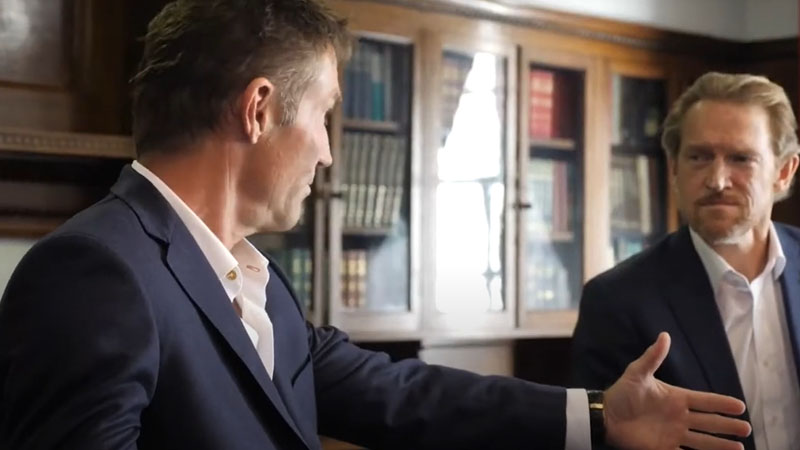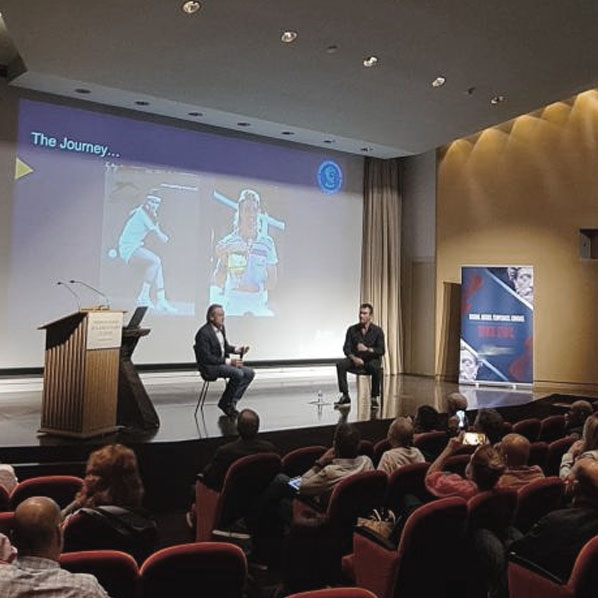-
About Us
-
Library
-
What We Do
-
Latest
- Shop
Stoicism for Modern Life and Business
November 22

Background
If Zeno of Citium — from Larnaca in Cyprus — did not bankrupt when his ship was wrecked on the way to Athens, if he was just another wealthy individual not many people would know of him today — maybe none.
2500 years later he is still remembered because he dealt in ideas and specifically because he founded Stoicism.
After his shipwreck he was wondering in Greece not knowing what to do with his life; as one did in situations like this, he asked the Oracle how to attain the best life.
Her response was that he should “take the complexion of the dead”.
His interpretation of the profound glance in his future was that he should read what dead people wrote.
The books of Xenophon’s Memorabilia were his first encounter with writings of dead people. He then studied Plato’s philosophy for years, followed by the Cynic philosophy. Aristotle from Plato’s side argued that it is okay to seek wealth; the Cynics with Diogenes as their star personality on the other hand argued that owning nothing is the path to the good life.
Zeno disagreed with both.
This led him to what today would be referred to in new product development as: white space. His philosophy occupies the middle between the two extremes: its okay to be wealthy, as a matter of fact it is better than being poor, but it is an indifferent when it comes to the good life. All a person needs to lead a good life — he argues — is a virtuous character. On this basis he founded his own school, and his students were initially called Zenonians.
Since his school was at Stoa Poikile, located on the north side of the Agora of Athens, the name of his school of philosophy changed to Stoicism — with capital S. The difference between capital “S” versus stoicism written with small “s” is: a Virtuous Character versus a stiff upper lip.
One Part Theory
The main principle is that we don’t control what happens to us we only control how we respond to it. Life can be what you want it to be; it is just a question of perception. Beliefs ultimately shape our emotions.
Essentially, we only control some of our thoughts (not the ones driven by instinct or strong emotion), our actions and to an extend our desires and our character.
We don’t control our body (if it is ill or healthy), reputation, fortune, and actions of others. Some aspects that we don’t control we can affect with targeted actions e.g., healthy eating and regular exercise can affect the health of our body.
The four cardinal values essential for a virtuous character according to the Stoics are:
1. Courage — to make bold decisions, to take a stance on what we believe
2. Justice — to treat everyone fairly
3. Temperance — to do everything in moderation, even moderation
4. Wisdom — to have good judgement and take the right action
Nine Parts Practice
We all get the theory and for most of us it makes sense. We have all the good intentions to be more Stoic but in the heat of the moment System 1 takes over in our heads according to Daniel Kahneman’s book “Thinking Fast and Thinking Slow”. System 1 is fast and is based on instinct and experience, whilst System 2 is our rational brain and is locked out of the action in those first moments of an event.
Very few of us will spill coffee on our shirt before an important meeting and take calm action to rectify or improve the situation. Our first reaction is probably frustration or even anger expressed usually in some four-letter word.
Replaying a heated conversation multiple times when someone said something derogatory or simply negative about us is familiar to all.
Getting upset about something that happened in the past or dreading something that may happen in the future is not helpful at all. It is wasted energy and not only that; it sometimes leads to a negative thought spiral that disrupts whatever we were supposed to be doing at the time.
In theory it is as simple as this:
when something is in our control we should take action, when it is not we should not spend even a second thinking about it.
And yet so difficult to put in practice.
Therefore, we must go to the “mind gym” every day and train if we want to be more Stoic. To use Marcus Aurelius’ metaphor, we have to strengthen our Inner Citadel and find our way there.
Here are nine practical tips to try out:
- Create a task list every day with things you can control
- Remind yourself every morning:
a. how to differentiate between virtues and indifferents
b. to think and act in a virtuous way
c. Memento mori : remember that you must die (not my favourite Stoic tip especially when I think of Calico’s initial goal to extend life to 750 years — achieve a-mortality as opposed to immortality)
d. Amor fati (Τύχην στέργε) : love of fate, love whatever happens to you, find the silver lining even if at a first glance it seems bad.
-
With every issue you face ask the question if it is in your control or not.
-
While thinking about the question in 3) imagine looking down at the issue and yourself from 30,000 ft — in other words “take the view from above”.
-
Reflect every evening on how you did with respect to the four cardinal values of Stoicism.
-
Practice cognitive distancing, think in the 3rd person about you.
-
When it comes to business, team motivation and productivity something we did at DMR — which I recommend — is a mental wellness week offered by the Aurelius Foundation. We spent a week engaging in the morning, at noon and end of day with some Stoic exercise or discussion that helped everyone learn more about the ancient philosophy and provided some of the tools shared here to practice it.
-
Write down answers to the following questions about yourself:
a. what is the most important thing in life for you?
b. what do you want your life to stand for or represent?
c. what do you want to be remembered for after you are dead?
d. what sort of a person do you most want to be in life?
e. what sort of a character do you want to have?
f. what do you want written on your tombstone?
- Create a table with the following three columns:
a. In my Control
b. Affect
c. Not in my Control.
Go through this exercise with your colleagues at work, your children, or your friends. You will discover that there are very few things in the first column many more in the third and in the second column there is a million things we can affect in the future of our children.
Conclusion
There are of course more tips and tools than the nine I chose to share above.
You can find them in numerous articles, books, video clips and podcasts about Stoicism, so many that it is difficult to choose where to start.
If this is the first article you ever read about stoicism and you are interested to learn more, I suggest reading John Sellars’ book “Lessons in Stoicism” which is a small book — only 66 pages — and offers a very concise and to the point summary of what Stoicism is.
After that if you still want to learn more, without a doubt “The Meditations” of Marcus Aurelius is probably the most useful book ever published. Its original language is Ancient Greek, so it is important to choose a good translation; I recommend Gregory Hays.
Another book I like from a modern Stoic is Donald Robertson’s “How to think like a Roman Emperor”.
If after reading all that you want to dig deeper then I recommend reading:
- Enchiridion of Epictetus (a compilation of practical tips)
- Seneca — Letters from a Stoic
I will leave you with a few maxims that I like:
- The way up and the way down are the same
- What stands in the way is the way
- Squeeze the most of your time here
- Pain is inevitable but suffering is optional
- What got you here, won’t get you there
Thank you for your time reading this. Let’s start a conversation on what constitutes a good life.

